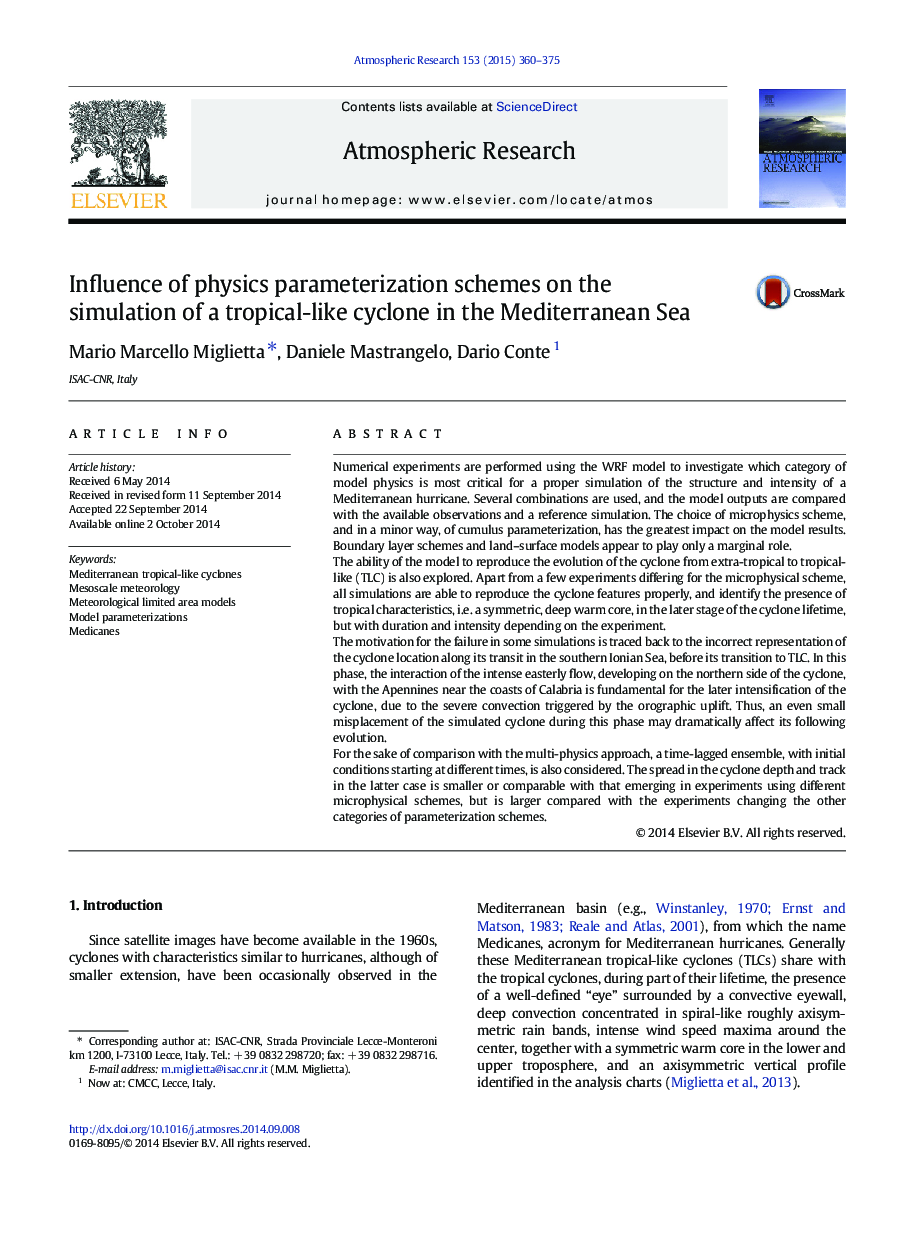| کد مقاله | کد نشریه | سال انتشار | مقاله انگلیسی | نسخه تمام متن |
|---|---|---|---|---|
| 6343420 | 1620520 | 2015 | 16 صفحه PDF | دانلود رایگان |
- A Mediterranean tropical-like cyclone (Medicane) is analyzed by means of numerical simulations.
- Simulated-cyclone sensitivity to different parameterization schemes is studied.
- The choice of microphysics scheme has the greatest impact on the model results.
- The spread of a time-lagged ensemble is comparable with that of the ensemble using different microphysical schemes.
- Features typical of a tropical cyclone are identified in most of the experiments.
Numerical experiments are performed using the WRF model to investigate which category of model physics is most critical for a proper simulation of the structure and intensity of a Mediterranean hurricane. Several combinations are used, and the model outputs are compared with the available observations and a reference simulation. The choice of microphysics scheme, and in a minor way, of cumulus parameterization, has the greatest impact on the model results. Boundary layer schemes and land-surface models appear to play only a marginal role.The ability of the model to reproduce the evolution of the cyclone from extra-tropical to tropical-like (TLC) is also explored. Apart from a few experiments differing for the microphysical scheme, all simulations are able to reproduce the cyclone features properly, and identify the presence of tropical characteristics, i.e. a symmetric, deep warm core, in the later stage of the cyclone lifetime, but with duration and intensity depending on the experiment.The motivation for the failure in some simulations is traced back to the incorrect representation of the cyclone location along its transit in the southern Ionian Sea, before its transition to TLC. In this phase, the interaction of the intense easterly flow, developing on the northern side of the cyclone, with the Apennines near the coasts of Calabria is fundamental for the later intensification of the cyclone, due to the severe convection triggered by the orographic uplift. Thus, an even small misplacement of the simulated cyclone during this phase may dramatically affect its following evolution.For the sake of comparison with the multi-physics approach, a time-lagged ensemble, with initial conditions starting at different times, is also considered. The spread in the cyclone depth and track in the latter case is smaller or comparable with that emerging in experiments using different microphysical schemes, but is larger compared with the experiments changing the other categories of parameterization schemes.
Journal: Atmospheric Research - Volume 153, February 2015, Pages 360-375
